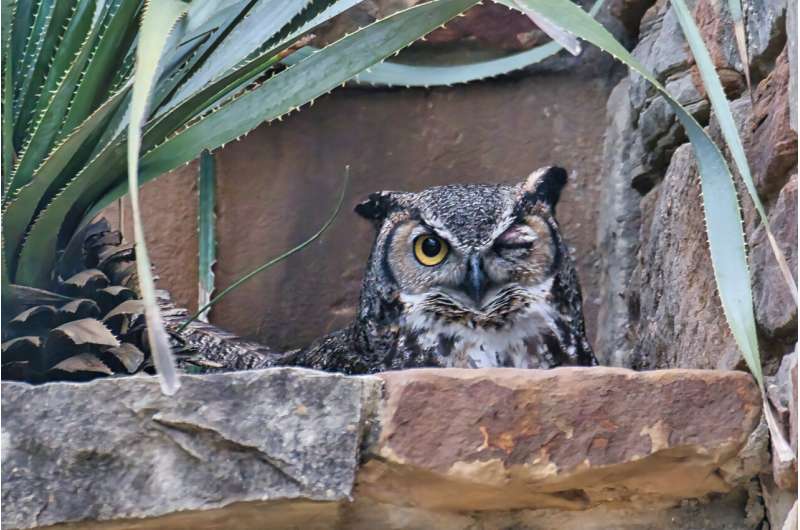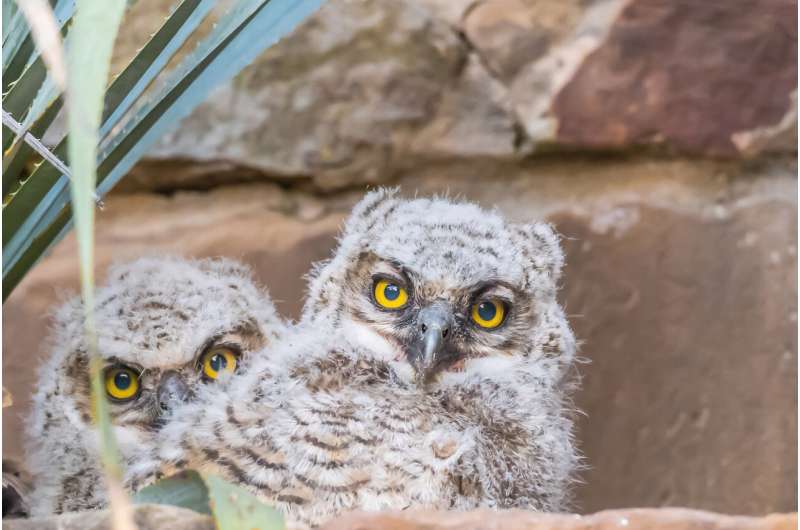This article has been reviewed according to Science X's editorial process and policies. Editors have highlighted the following attributes while ensuring the content's credibility:
fact-checked
trusted source
proofread
'Flying tigers' come to a university's live bird cams project

A new feathered face has just popped up in front of the live cameras hosted by the Cornell Lab of Ornithology's Bird Cams project.
Athena, a great horned owl, is poised to become the next international avian superstar. For a dozen years she's been nesting just feet away from streams of visitors at the 284-acre Lady Bird Johnson Wildflower Center in Austin, Texas, part of the University of Texas. Now, she's doing it before a global audience.
"Our pan-tilt-zoom camera is tucked into the existing architecture, about 20 feet away from the nest site," said Charles Eldermire, the Cornell Lab's Bird Cams project leader. "In addition to the usual daytime views, the camera also has an infrared light that the birds can't see but which makes it possible for us to see them at night when a lot of the action takes place."
Some of that nighttime action will include bringing in prey. Great horned owls are prodigious hunters, sometimes called "flying tigers" or "tigers of the night." They're also very adaptable, as Athena's chosen nest site demonstrates.

Like the lab's other live cams, this one has its own web page, social media stream, highlight clips, and information about the species. For example, great horned owls usually produce one or two eggs but don't build a nest themselves. They take over other the nests of other birds, use a tree cavity, or choose another location that offers protection. Fuzzy chicks will be at the nest site for about six weeks before moving to nearby trees.
"Watching Athena raise owlets each year has been such an amazing experience that we decided to share it with people who can't visit in person," said Lee Clippard, executive director of the Wildflower Center. "This new camera will help us share a part of the Wildflower Center with a much wider audience and expand the conversation about the benefits of using native plants."
"Every year, more and more people tune in to the cams," Eldermire said. "In just the past few years viewers watched for the equivalent of 2,000 years. That's a lot of people watching for a lot of time and it speaks to the human desire to have a connection with nature."
Provided by Cornell University

















